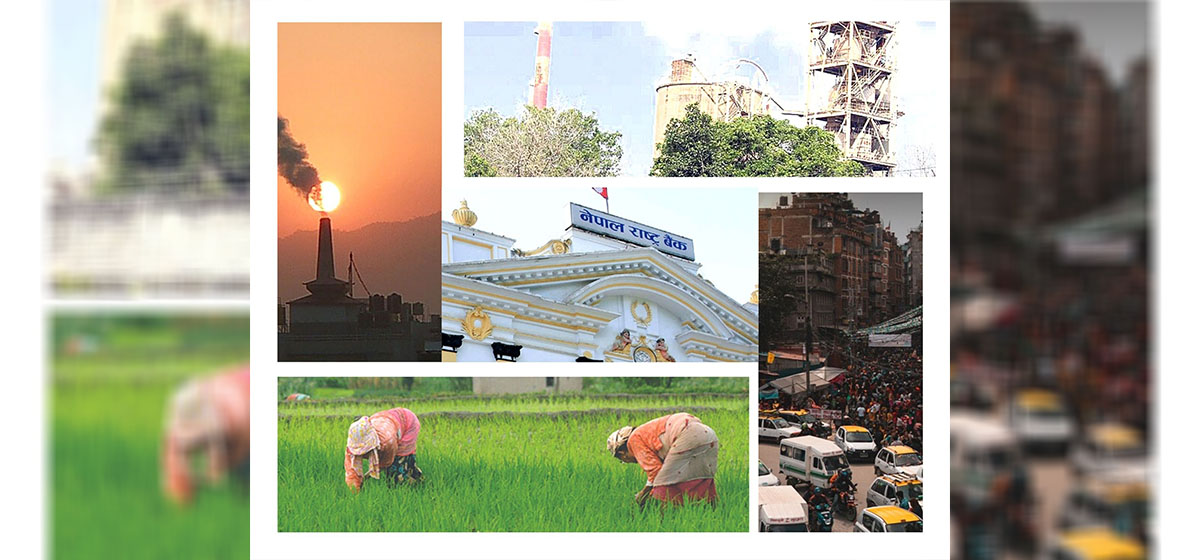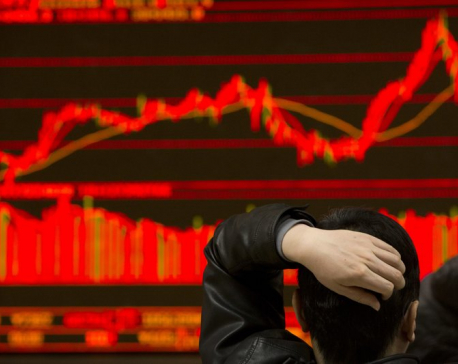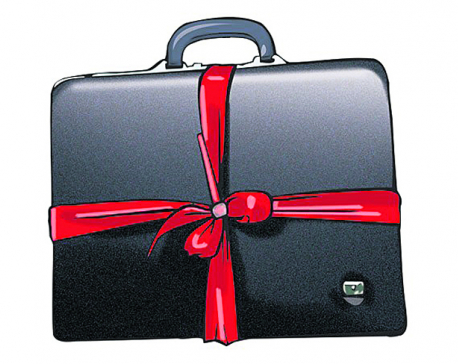
OR
#Nepali Economy in 2021
Economic recovery: Some rays of hope but still a long way to go
Published On: January 1, 2022 06:05 AM NPT By: RAJESH KHANAL

The year 2021 was definitely not as bleak as the previous year in terms of freeing the economy from the claws of the COVID-19 pandemic. Economic activities gathered pace as the spread of the coronavirus slowed down gradually. Signs are positive but the economy could fall into a crisis if corrective measures are not implemented on time.
The Nepali economy, which was headed toward the path of recovery by the end of 2020, following a decline in the impacts of the first wave of the coronavirus, was faced with the second wave of the pandemic toward the end of April 2021. Most economic activities were brought to a grinding halt for months, once again. This has taken down a number of indicators of macroeconomic performance, mainly those related to the external sector, raising questions if the current situation is a ‘pre-cyclone watch’ of the imminent economic crisis in the country.
Throughout 2021, the high fluctuation in banks’ interest rates, worsening foreign currency reserves with deteriorating balance of payments (BoP), soaring consumer inflation, liquidity crunch in the banking system, rising public borrowing, widening trade deficit and volatility in stock exchange market came into limelight. Experts have stressed that the situation calls for the implementation of proper public policies. Nevertheless, some of the indicators point at the economy improving gradually.
After the first lockdown imposed in March 2020, the economy still did not feel the heat mainly due to the cushion of an increasing remittance inflow, the main source of foreign currency earnings of the country that finance largely the import-based landlocked economy. Just after a year of the first wave, the remittance inflow started to follow a downward graph creating pressure on the country’s foreign currency reserves.
Nepal Rastra Bank (NRB) records show as of January 2021, foreign currency reserves with the country stood at USD 12.78 billion, sufficient to cover the prospective merchandise imports of 13.9 months, and merchandise and services imports of 12.6 months. By mid-November 2021, the country is left with foreign currency reserves of USD 10.47 billion, which can finance the merchandise and services imports of only 7.2 months.
According to Nara Bahadur Thapa, former executive director at NRB, Nepal does not need to worry unless the foreign exchange reserve sustains imports for seven months. “However, if it falls rapidly every month, it should be a matter of concern and calls for effective government policies,” Thapa said.
Keshab Acharya, former economic advisor of the Ministry of Finance, said the problem arising in the external sector will certainly create a chain effect on the domestic sector of the economy.
In the past almost six months, the country’s banking system has been reeling under a shortage of loanable funds which the bankers have blamed largely on the central bank’s switching to provision of credit-deposit (CD) ratio from credit to core capital plus deposit (CCD) ratio, slow capital expenditure by the government and drop in remittance inflow. NRB data shows that banks and financial institutions (BFIs)’s aggressive lending against slow deposit collection was the main cause behind the current liquidity shortage.
By December end, total deposits with the BFIs reached Rs 4.81 trillion while they provided loans of Rs 4.61 trillion. As a result of excessive flow of loans, the CD ratio hit 91.02 percent, which was way higher than that of the central bank-fixed ceiling of 90 percent.
Due to this reason, many banks have already stopped issuing loans to potential investors, which according to economists has created the risk of an economic slowdown. Experts have said that the shortfall in loan flow will also affect the government’s target of achieving economic growth of seven percent. Acharya said the banks’ failure to provide loans could have a detrimental effect on achieving economic growth as economic activities slow down when there is not enough cash in the market.
Rameshwor Khanal, former finance secretary, however, ruled out the possibility of an economic recession due to the BFIs’ inability to provide loans to the private sector. “In the post-pandemic period, the private sector has taken excessive loans, which is of course a positive indication as it could help increase the aggregate demand along with boosting the supply side,” Khanal said.
The NRB records show that there was a significant rise in the banks’ loans to manufacturing and service industries despite a slow rise in the outstanding loans to agricultural productions. If the central bank’s records are anything to consider, the loan portfolios of the BFIs, given the loan on imports of consumer items within the limit, will post some positive outcomes in the future, say the experts.
Over the last one year, Nepal’s trade deficit widened from Rs 600.45 billion to Rs 735.48 billion (as of mid-November), despite the country achieving a notable gain in its export earnings. “It will yield better results if the expenses are made for imports of capital goods,” Khanal said.
During the period, a slow growth in revenue collection amid rising public expenditure has increased the deficit financing of the government. Government records show that the public debt has crossed Rs 1.72 trillion, which is around 40 percent of the country’s GDP. The World Bank has projected that the ratio of public debt to Nepal’s GDP could reach 50 percent by 2024. Although it is an obligation for a country like Nepal to finance the majority of development projects through public borrowing, an increase in its amount at an alarming rate, seen at present, is likely to take a toll on the economic progress of the country.
NRB data shows that the government has also failed to check hikes in the prices of consumer goods. The consumer inflation rate has crossed five percent from around 3.56 percent during the review period. High inflation could make Nepali consumers cut back on their spending while affecting private sector investment, which would be disastrous for a recovery.
Finance Secretary Madhu Kumar Marasini said the surge in demand after a decline in the impacts of the coronavirus has led to an abrupt rise in imports along with causing negative impacts on the country’s BoP. According to him, the government has already started implementing policy measures to address BoP, foreign currency reserves and remittance inflow along with injecting necessary amounts to increase liquidity in the banking system. “We might have to wait for another few months to see the positive results of the impacts of the government’s policies,” Marasini added.
You May Like This

Secondary market investors affected by high volatility in 2021
KATHMANDU, Jan 1: Nepal Stock Exchange (Nepse) observed high volatility during 2021, with the market observing a large range of fluctuations... Read More...

The budget might not help create farm-based jobs as expected
KATHMANDU, June 2: The government claims to have facilitated domestic agricultural production to increase employment opportunities, but the budget allocation... Read More...





Just In
- MoHP cautions docs working in govt hospitals not to work in private ones
- Over 400,000 tourists visited Mustang by road last year
- 19 hydropower projects to be showcased at investment summit
- Global oil and gold prices surge as Israel retaliates against Iran
- Sajha Yatayat cancels CEO appointment process for lack of candidates
- Govt padlocks Nepal Scouts’ property illegally occupied by NC lawmaker Deepak Khadka
- FWEAN meets with President Paudel to solicit support for women entrepreneurship
- Koshi provincial assembly passes resolution motion calling for special session by majority votes






_20220508065243.jpg)






Leave A Comment